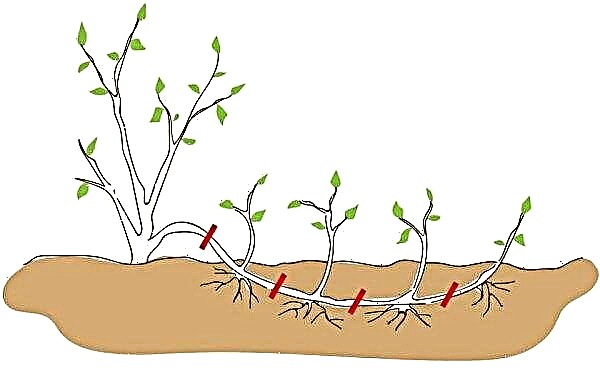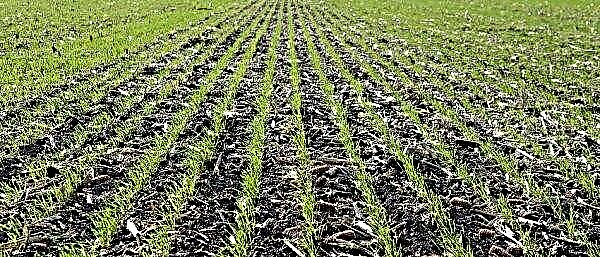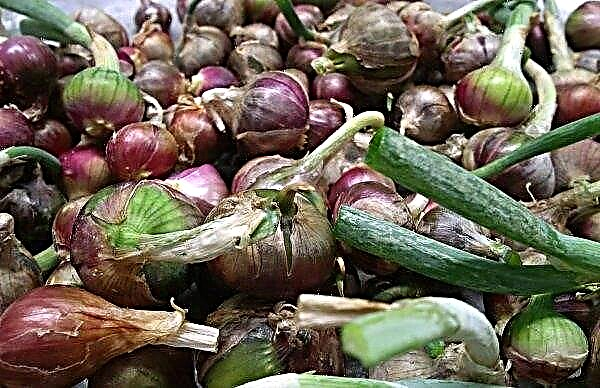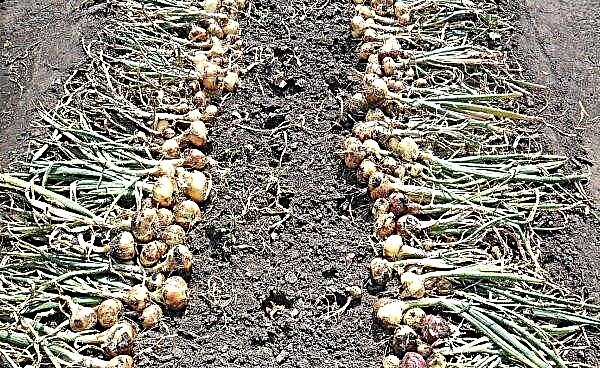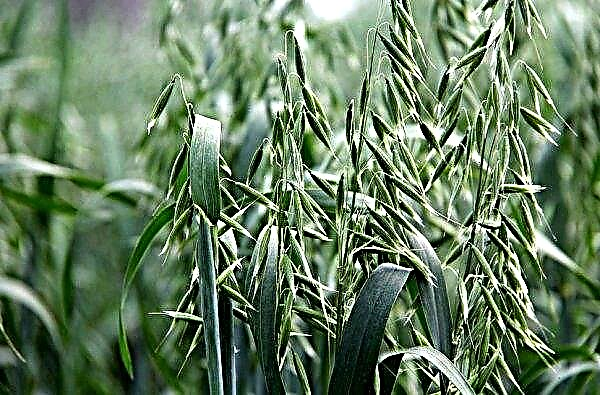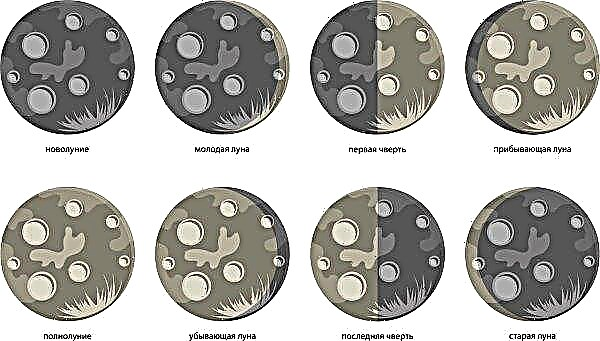Breeding sheep - albeit a profitable, but rather troublesome business. If you have already decided to engage in sheep farming, you should approach this very responsibly and, first of all, inquire about what diseases can harm animals. A frequent ailment is diarrhea in sheep, which, if untreated, can even lead to death.
Sheep diarrhea: diseases causing diarrhea, symptoms, course of the disease
There are many diseases in sheep that can lead to an upset digestive system, diarrhea, and malaise. Sometimes even experienced sheep farmers do not immediately determine that something is wrong with the animal, and the timely detection of the disease and its immediate treatment often save the animals from death.
Did you know? Anaerobic dysentery was first identified and described as a disease called “massive diarrhea of lambs” at the end of the 19th century (in 1885). During this period, a large-scale death of lambs was observed in Russia — out of 100 newborns, 70 fell ill and died 50 individuals.
Anaerobic Dysentery
Anaerobic dysentery is an acute toxic infection that appears in newborn lambs. The disease can be identified by such signs as diarrhea with rapid dehydration of the body, ulcerative enteritis (damage to the mucous membrane of the small intestine), resulting in rapid death of the animal.

The causative agent of infection is a toxic microorganism that has the ability to continue its life activity even during thermal treatments. For example, at a temperature of + 90 ° C, he lives another 30 minutes, and boiling can withstand up to 10 minutes. 3-5 days may be stored in manure.
Usually dysentery affects newborns of lambs at the age of 1–5 days, quickly infecting a large number of individuals. It is transmitted through bedding, equipment and other objects contaminated with feces of sick individuals. A lamb can become infected by sucking milk if there is infected manure on the udder of the sheep.
The occurrence of the disease is most often explained by the lack of preventive vaccination, as well as improper feeding during the period of coagulation (lack of proteins, carbohydrates, vitamins and minerals leads to weakness of the born individual), violation of the temperature regime (hypothermia).

The oppression in kosharas and unsatisfactory conditions of detention can also provoke the appearance of dysentery. The disease can be super-acute (lightning-fast death), acute (lasts about 3 weeks) and less often chronic, as a result of which individuals recover very slowly and lag behind in development.
Enterotoxemia
The disease can be found in all countries where sheep are bred. This is a toxic infection that affects the nervous system and entails the rapid death of the animal. Once in the intestines, the pathogen, a spore-forming anaerobic, begins to multiply actively, producing toxins that are absorbed into the blood.
The disease can be transmitted from sick animals to healthy ones, and also enter the body from pastures, where persistent pathogens persist for years. Outbreaks occur in the spring.

The ailment proceeds in 3 forms. In case of lightning fast, the animal dies within 10-12 hours. In acute - the disease lasts about 1 day. The chronic form is observed in individuals with poor fatness, characterized by weakness, anemia, diarrhea, a yellow tinge of the mucous membranes. With the timely detection of the disease (up to 3-4 days), the animal can be saved.
With helminthiasis
Helminthiasis combines a large group of diseases (60% of all established ailments) that arise as a result of the ingestion and progression of various types of parasitic worms in animals.
There are 3 main groups of diseases:
- Helminthiasis. Diseases caused by worms of the trematode class of leaf-shaped form: fasciosis, paramphistomatosis, dicroceliosis. The bile ducts of the liver and intestines are primarily attacked.
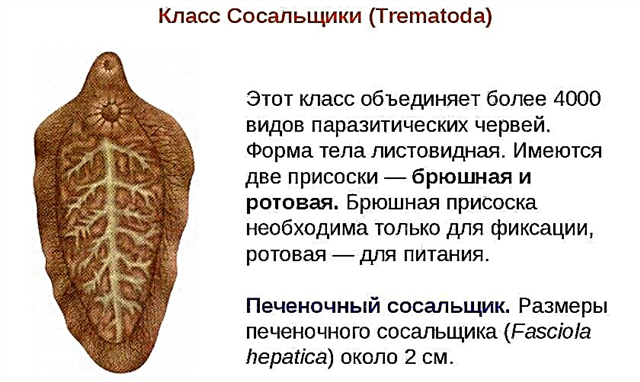 In diseased individuals, weakness, anemia, emaciation, diarrhea, a yellow tinge of the mucous membranes, edema of the eyelids are observed. Sometimes diseases can last for months. Transmitted through water, grass growing near water bodies. Such a disease as dicroceliosis can be asymptomatic and only in sheep older than 3 years there is progressive depletion, which often leads to death.
In diseased individuals, weakness, anemia, emaciation, diarrhea, a yellow tinge of the mucous membranes, edema of the eyelids are observed. Sometimes diseases can last for months. Transmitted through water, grass growing near water bodies. Such a disease as dicroceliosis can be asymptomatic and only in sheep older than 3 years there is progressive depletion, which often leads to death. - Cestodoses. The causative agents of this group of diseases, which include moniesiosis and coenurosis, are cestodes - tapeworms that affect the small intestines of animals. Moniesiosis and coenurosis often affect young lambs and proceed in a mild form.
 Pathogens enter the body as a result of swallowing ticks when eating grass on pastures located in areas with high humidity. Diseases in more severe forms manifest themselves by sharp aimless movements, timidity, refusal to feed, diarrhea. Often animals die.
Pathogens enter the body as a result of swallowing ticks when eating grass on pastures located in areas with high humidity. Diseases in more severe forms manifest themselves by sharp aimless movements, timidity, refusal to feed, diarrhea. Often animals die. - Nematodoses. Pathogens are roundworms of the nematode, which, when ingested, infect all tissues and organs of animals, with the exception of horn tissue and wool.
 Infection occurs most often on pastures when swallowing grass with larvae. Symptoms: cough, decreased appetite, anemia of the mucous membranes. Young animals often have profuse diarrhea.
Infection occurs most often on pastures when swallowing grass with larvae. Symptoms: cough, decreased appetite, anemia of the mucous membranes. Young animals often have profuse diarrhea.
With fascioliasis
Fascioliasis is a disease in small cattle in which parasitic trematodes affect the bile ducts of the liver. Like most other parasitic diseases, fascioliasis is transmitted along with water and food when grazing sheep in places with an abundance of water bodies.
The disease can last a long period (up to 3-4 months), accompanied by loss of appetite, diarrhea, constipation, fever, anemia. If measures are not taken in time for treatment, the animal will soon die.
Did you know? People like to breed sheep so much that today there are about 1.2 billion individuals on the planet. The largest number — 200 million sheep live in China.
Echinococcosis
Echinococcosis is a chronic parasitic disease caused by the most dangerous parasitic worm - echinococcus. This is the most common ailment, having a wide geography, including South and North America, Australia, Japan, as well as the European continent.

The disease is transmitted along with grass and water - while in the pasture, sheep and sheep swallow helminth eggs. It can also progress if sanitary conditions are not observed on farms. The cause of the spread of the disease is often stray dogs, leaving infected feces in the pastures and in the territories of the shepherd.
After entering the body, larvae form in the intestine, which are then transferred along with the blood throughout the body and continue to develop in the form of echinococcus. Most often, the liver and lungs are affected, less often - other organs.
The disease affects many animals, including cattle, however, it is the sheep that suffer most often from the disease. Symptoms include a characteristic cough, poor fatness, loose stools, hair loss, and weakness when animals simply lie on the ground.
Colored diarrhea
Another ailment that is dangerous exclusively for newborn lambs is colored diarrhea. It manifests itself after a few hours from birth or within 3-5 days. Despite the name, the stool is transparent in color, so it is not always possible to determine the disease on time.
In addition to loose stools, the lamb feels very weak, loses its appetite, and dehydration occurs in the body. To prevent the disease, vaccinate the ewes 3-4 weeks before the expected birth. In the early stages, the disease is cured by a complex complex of drugs.
Important! Even with the slightest suspicion of a disease, the animal must be immediately isolated from the herd, provide a favorable temperature and good ventilation of the room.
Sheep diarrhea treatment
In most cases, if the disease is detected on time, it can be treated. It is important to diagnose in time, therefore, at the first doubts about the good health of the animal, it is necessary to contact the veterinary service, which will conduct the appropriate tests, establish the cause of the disease and prescribe treatment.

In an adult
Diseases causing digestive system disorders in adult sheep and sheep are treated as follows:
- with enterotoxemia - treatment is possible in the early stages, sheep are injected with hyperimmune serum along with antibiotics. In an advanced state, the disease is not treated;
- with helminthiasis - treatment is prescribed based on what parasite caused the disease, since this is a whole group including various diseases. In case of nematode damage, Ivermectin injections help well, and Albendazole copes with round and ribbon helminths;
- with fascioliasis - the best cure is a group of anthelmintics, including Hexichol, Acemidophen, Hexachloroethane, which are administered to animals along with food. Dosage is determined solely by the veterinarian. Treatment can be carried out at home, isolating the affected individual;
- with ectococcosis - while there are no reliable methods of treatment.
In young animals
Since young animals are affected by the same diseases as adult sheep and rams, their treatment does not have special differences, except for the dosage. Often, the amount of drugs administered during treatment depends on the weight of the animal, and this is necessarily taken into account by the veterinarian.

The lambs
The situation is somewhat different in newborn lambs, since they are threatened with special diseases, which means and treatment methods will differ:
- with anaerobic dysentery - Intramuscular injection of hyperimmune serum or synthomycin is injected into the body of the animal. Any antibiotic or sulfa drug is also used;
- with colored diarrhea - the treatment is quite difficult. First you need to give the lamb a warm electrolyte solution so that its body can survive safely before the action of antibiotics. The solution is administered every day every 6 hours. The best antibiotics for this disease: "Spectomycin", "Gentamicin", "Nifuraldeson" - they are administered through the oral cavity every 2 hours.
If the loose stool of a lamb is not the result of a serious illness, you can use more gentle means, for example, make a solution of brewed strong tea and a decoction of oak bark - this means to water the animal. The Zinaprim drug also helps - a pinch of medicine is poured onto the lamb’s tongue, 2-3 manipulations are enough.
Diarrhea in lambs not related to disease
Diarrhea in lambs is not always a consequence of the disease. Sometimes, due to certain circumstances (the death of an ewe during childbirth, mastitis, or the mother abandons the baby), the lamb remains an orphan and has to be nursed by artificial feeding with mixtures. They can be replaced with cow's milk, but very carefully, in proportion, as milk is significantly different in composition from sheep’s.
Important! Before giving the lamb cow milk, it must be boiled over. Yes, vitamins will remain in it less, but this procedure will save the cub from diarrhea.
Since the digestive system of the newborn lamb is still very weak, it can malfunction during the period of adaptation of the body to an unusual feed, including diarrhea. To prevent dehydration, it is necessary to give the cub a plentiful drink. If the malaise quickly worsens, you need to consult a veterinarian.

Digestive system disorders can also be caused by such factors as switching from milk to vegetable feed, drinking water with a high salt content or milk from a patient with mastitis.
Prevention
The likelihood of disease is better to prevent than to engage in long-term expensive treatment in the future or even lose part of the flock. There is a set of veterinary and sanitary measures that must be carried out in a sheep farm in order to destroy parasitic worms in time.
These include:
- manure deworming - folding it outside the shepherd, where high temperatures kill possible eggs and larvae of parasitic worms;
- periodic change of place of grazing animals in the presence of a vast territory of pastures;
- regular cleaning of rooms for animals from manure with scalding with boiling water of wooden and metal fragments;
- compliance with temperature and relative humidity;
- the organization of proper nutrition;
- water filtration (if possible - it is better to water animals with water from deep wells).
In addition to these measures, preventive measures apply directly to animals.
Check out

In particular, to prevent the development of parasitic diseases, veterinarians conduct regular inspections of the livestock, vaccinations a month before the alleged outbreaks of diseases or lambing, and, if detected, they conduct treatment.
To avoid the occurrence of infectious diseases, animals are vaccinated according to the schedule.
The administration of an injection of antitoxic serum against anaerobic dysentery and enterotoxemia gives a good effect to newborn lambs.
As you can see, there are many diseases that can "sneak up" completely unnoticed, but in the end cause great harm to the entire flock, so it is very important to conduct examinations and preventive measures in time.

 In diseased individuals, weakness, anemia, emaciation, diarrhea, a yellow tinge of the mucous membranes, edema of the eyelids are observed. Sometimes diseases can last for months. Transmitted through water, grass growing near water bodies. Such a disease as dicroceliosis can be asymptomatic and only in sheep older than 3 years there is progressive depletion, which often leads to death.
In diseased individuals, weakness, anemia, emaciation, diarrhea, a yellow tinge of the mucous membranes, edema of the eyelids are observed. Sometimes diseases can last for months. Transmitted through water, grass growing near water bodies. Such a disease as dicroceliosis can be asymptomatic and only in sheep older than 3 years there is progressive depletion, which often leads to death. Pathogens enter the body as a result of swallowing ticks when eating grass on pastures located in areas with high humidity. Diseases in more severe forms manifest themselves by sharp aimless movements, timidity, refusal to feed, diarrhea. Often animals die.
Pathogens enter the body as a result of swallowing ticks when eating grass on pastures located in areas with high humidity. Diseases in more severe forms manifest themselves by sharp aimless movements, timidity, refusal to feed, diarrhea. Often animals die. Infection occurs most often on pastures when swallowing grass with larvae. Symptoms: cough, decreased appetite, anemia of the mucous membranes. Young animals often have profuse diarrhea.
Infection occurs most often on pastures when swallowing grass with larvae. Symptoms: cough, decreased appetite, anemia of the mucous membranes. Young animals often have profuse diarrhea.